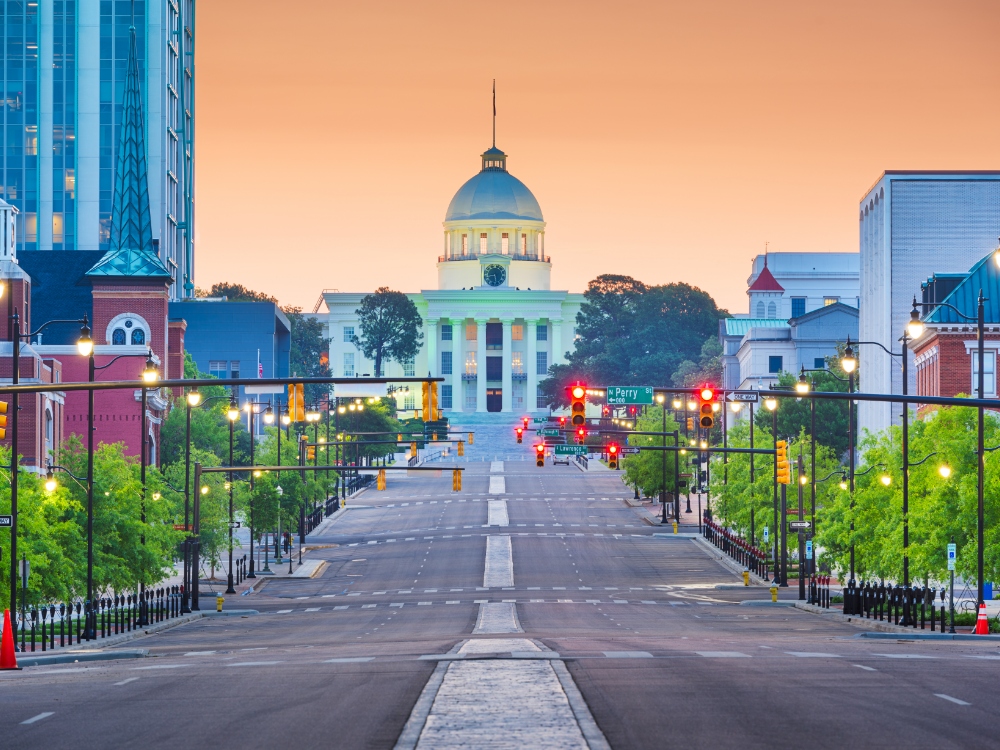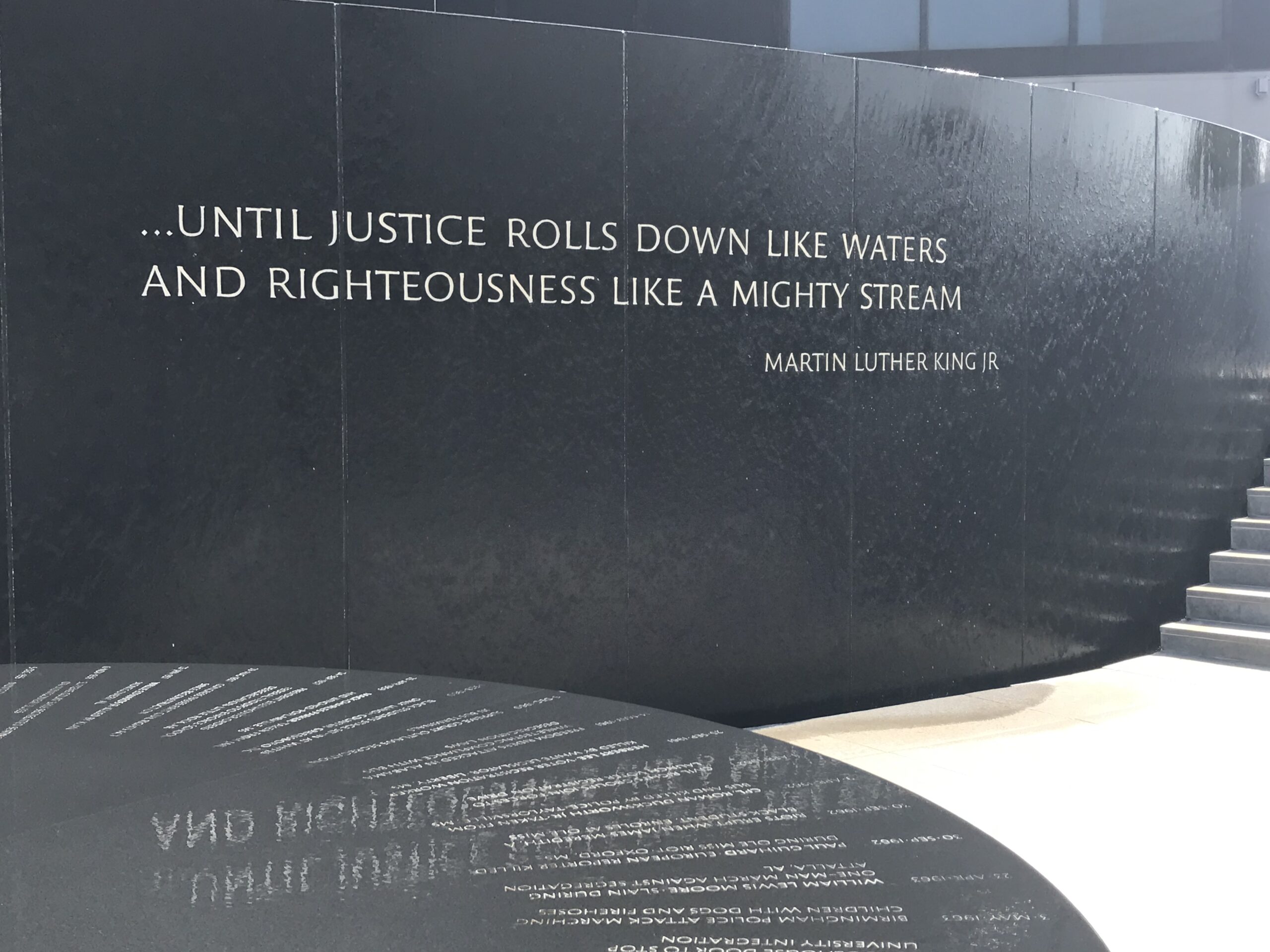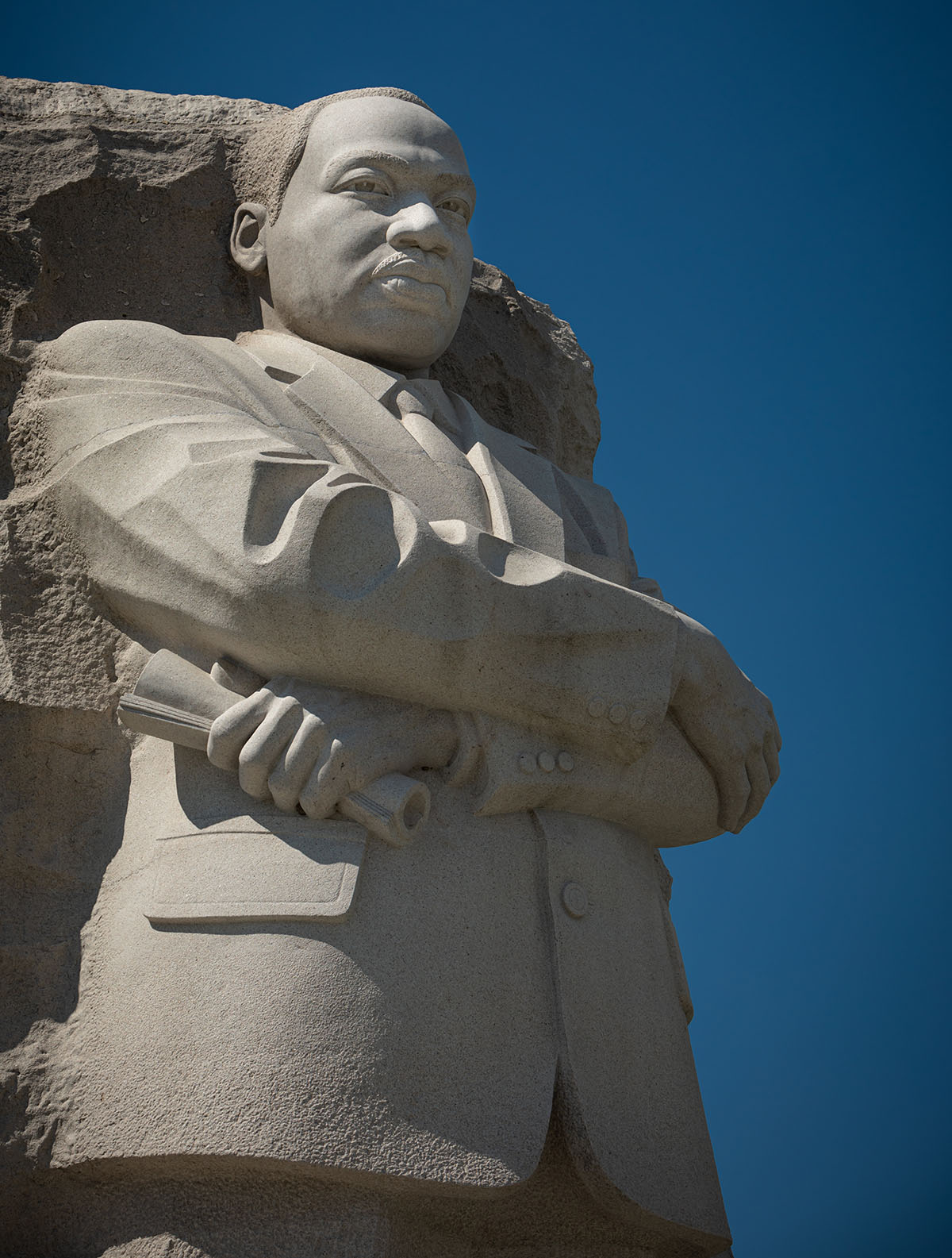

4-Night- Civil Rights Journey through the Deep South
Step into the heart of the Civil Rights Movement on a powerful and immersive journey through Memphis, Birmingham, Montgomery, and Selma.
Program & Group Tour Summary
Tour Number: 0125-195187
Experience the powerful legacy of the Civil Rights Movement on this 4-night journey through Memphis, Birmingham, Selma, and Montgomery. Visit iconic sites like Sun Studio and Beale Street in Memphis, and explore the deep history of the movement at the National Civil Rights Museum, the 16th Street Baptist Church, and the Birmingham Civil Rights Institute. From walking the Edmund Pettus Bridge in Selma to touring the Rosa Parks Museum, the Legacy Museum, and the Dexter Avenue King Memorial sites, this immersive program offers a moving and educational look at America’s path toward justice and equality.
Program Highlights & Inclusions
- Round trip flights to your destination
- Professional tour manager with your group throughout the tour
- Private Motor coach transportation throughout your tour
- One night Accommodations in Memphis
- Three nights Hotel Accommodations in Montgomery
- Tour of Sun Studios
- Free Time on Beale Street
- Guided tour of the 16th Street Baptist Church
- Admission to the Birmingham Civil Rights Institute
- Visit to Kelly Ingram Park
- Visit to the Viola Liuzzo Memorial
- Visit to the Selma Interpretive Center
- Guided Tour of Selma
- Visit to the Edmund Pettus Bridge in Selma
- Admission to the Rosa Parks Museum and Children’s Wing
- Guided Tour of the Dexter Avenue King Memorial Parsonage Museum
- Tour of the Dexter Avenue King Memorial Baptist Church
- Admission to the Legacy Museum: From Enslavement to Mass Incarceration and National Memorial for Peace and Justice
- Admission to the Freedom Monument Sculpture Park
- Visit the Maya Lin Civil Rights Memorial (outside only)
- Admission to the National Civil Rights Museum at the Lorraine Motel
Daily Itinerary
You’ll depart on your flight. When you arrive in Memphis, you will meet your tour manager. Your bus will pick you up and you’ll continue your trip.
You’ll visit The National Civil Rights Museum at the Lorraine Motel, a very special experience that will take you through centuries of history. You’ll begin your visit within the original Lorraine Motel structure. The Lorraine Motel is forever etched in America’s collective memory with the assassination of Martin Luther King, Jr. in 1968, but even before that fateful day, the property at 450 Mulberry Street had a fascinating history in its own right. Before it was the Lorraine, it was the Marquette Hotel that catered to black clientele in segregated Memphis. You’ll continue through the Legacy exhibits within the Young & Morrow and Boarding House buildings across Mulberry Street. The museum offers 260 artifacts, more than 40 new films, oral histories, interactive media and external listening posts that guide visitors through five centuries of history — from the beginning of the resistance during slavery, through the Civil War and Reconstruction, the rise of Jim Crow, and the seminal events of the late 20th century that inspired people around the world to stand up for equality.
You’ll take a tour of Sun Studios. Reputedly the first rock-and-roll single, Jackie Brenston and his Delta Cats’ “Rocket 88” was recorded there in 1951 with song composer Ike Turner on keyboards, leading the studio to claim status as the birthplace of rock & roll.
You’ll have free time to explore the exciting downtown Memphis area, Beale Street.
After dinner, you will check into your Memphis area hotel.
After breakfast, you’ll check out of your hotel room. You’ll board your bus and depart the hotel for Birmingham.
After lunch, you’ll take a tour of Sixteenth Street Baptist Church, the first black church in Birmingham. The church became central to the Civil Rights Movement during the 60s and Dr. Martin Luther King, Jr. was a frequent speaker there. In September of 1963, the church was the target of a racially motivated bombing that killed four girls. The church was rebuilt with the help of donations and it reopened in June of 1964.
You’ll visit the Birmingham Civil Rights Institute, a cultural and educational research center that promotes a comprehensive understanding and appreciation for the significance of civil rights developments in Birmingham with an increasing emphasis on the international struggle for universal human rights. BCRI is a “living institution” that views the lessons of the past as crucial to understanding our heritage and defining our future.
You’ll visit Kelly Ingram Park, an improved public park that contains emotionally powerful sculptures depicting the civil rights struggle in Birmingham. The park served as an assembly spot for activities of the Southern Christian Leadership Conference and other groups in the movement.
After dinner, you’ll begin your drive to Montgomery where you’ll arrive at your hotel and check in.
After breakfast, you’ll board your bus and depart the hotel for Selma.
You’ll board your bus and depart the hotel for the day.
You’ll visit the Viola Liuzzo Memorial. On March 25, 1965, Viola Liuzzo was driving marchers home when she was shot and killed by KKK members. Her car crashed at the site of the present marker. In 1991, she was honored by the Women of the southern Christian Leadership Conference with the marker on the highway. The Marker reads: “In memory of our sister Viola Liuzzo who gave her life in the struggle for the right to vote… March 25, 1965. Presented by SCLC/Women, Evelyn Lowery National Convener – 1991. The Southern Christian Leadership Conference, Joseph Lowery, President.”
You’ll stop at the Selma Interpretive Center which serves as the Welcome Center to the trail located at the foot of the Edmund Pettus Bridge. The Interpretive Center offers an interpretive exhibit and bookstore. You’ll see a brief film before heading the bridge.
After lunch, you’ll take a guided tour of Selma which played a significant role in the civil rights movement of the 1960s, particularly the Voting Rights March from Selma to Montgomery in 1965, which became a pivotal event in the struggle for African American voting rights.
You’ll walk across the Edmund Pettus Bridge in Selma. The Selma-to-Montgomery March for voting rights ended three weeks–and three events–that represented the political and emotional peak of the modern civil rights movement. On “Bloody Sunday,” March 7, 1965, some 600 civil rights marchers headed east out of Selma on U.S. Route 80. They got only as far as the Edmund Pettus Bridge six blocks away, where state and local lawmen attacked them with billy clubs and tear gas and drove them back into Selma. Two days later on March 9, Martin Luther King, Jr., led a “symbolic” march to the bridge.
You’ll return to Montgomery.
You will visit the Rosa Parks Museum and Children’s Wing in Montgomery, Alabama. On December 1, 1955, Mrs Parks refused to give up her seat on the Montgomery City Bus to a white man sparking the 381 day Montgomery Bus Boycott that fueled the Civil Rights Movement. Troy University has dedicated the Museum and Children’s Wing to Rosa Parks, the “Mother of the Civil Rights Movement”. In the Rosa Parks Museum and Children’s Wing, you’ll go back in time on the Cleveland Avenue Time Machine to discover all of the people, like Rosa Parks, who made a difference in the world we live in today.
After dinner, you’ll return to your hotel.
After breakfast, you’ll board your bus and depart the hotel for the day.
You’ll take a guided tour of the Dexter Avenue King Memorial Parsonage Museum where you’ll experience the actual residence where Dr. King and his young family lived between 1954 and 1960; an Interpretive Center, and the King-Johns Garden for Reflection.
In the Dexter Avenue King Memorial Baptist Church, a National Historic Landmark, you’ll see the modest pulpit where Rev. Martin Luther King, Jr. first preached his message of hope and brotherhood. This church was also a center point of the Montgomery bus boycott. A large mural in the church depicts King’s civil rights crusade from Montgomery to Memphis.
After lunch, you’ll visit the Legacy Museum and National Memorial. The Legacy Museum is located on the site of a former warehouse where black people were enslaved in Montgomery, Alabama, the museum uses interactive media, sculpture, videography and exhibits to immerse you in the sights and sounds of the domestic slave trade, racial terrorism, the Jim Crow South, and the world’s largest prison system. You’ll then walk to the National Memorial for Peace and Justice where more than 4400 African American men, women, and children were hanged, burned alive, shot, drowned, and beaten to death by white mobs between 1877 and 1950. Millions more fled the South as refugees from racial terrorism, profoundly impacting the entire nation. Until now, there has been no national memorial acknowledging the victims of racial terror lynchings. On a six-acre site atop a rise overlooking Montgomery, the national lynching memorial is a sacred space for truth-telling and reflection about racial terror in America and its legacy.
You’ll visit the Freedom Monument Sculpture Park. Overlooking the Alabama River, Freedom Monument Sculpture Park honors the lives and memories of the 10 million Black people who were enslaved in America and celebrates their courage and resilience. At this 17-acre site along the very river where tens of thousands of enslaved people were trafficked, breathtaking art and original artifacts invite an immersive, interactive journey and provide a unique view into the lives of enslaved people.
You’ll visit the Maya Lin Civil Rights Memorial. Dedicated in 1989, the memorial was designed by Maya Lin, who found inspiration in the paraphrase from Amos 5:24 that King used in his “I Have a Dream” speech: “We will not be satisfied until justice rolls down like waters and righteousness like a mighty stream.” On the Memorial’s circular, black granite table, water emerges from the center and flows evenly across a timeline, reminiscent of a sundial, that chronicles the major events of the movement and records the names of 40 men, women and children who were killed during the struggle. Behind the table, a thin sheet of water flows down a 40-foot-long curved, black granite wall on which the words “until justice rolls down like waters and righteousness like a mighty stream” are inscribed.
After dinner, you’ll return to your hotel.
After breakfast, you’ll check out of your hotel room. You’ll board your bus and depart the hotel for the day. You’ll return to Memphis for your flight home.

A Brief History On Martin Luther King Jr.
Dr. Martin Luther King Jr. (1929–1968) was a Baptist minister and civil rights leader who became the face of the movement for racial equality in the United States. Born in Atlanta, Georgia, he was influenced by his father, a pastor, and the teachings of Mahatma Gandhi, which shaped his commitment to nonviolent resistance. King rose to national prominence during the 1955–56 Montgomery Bus Boycott, sparked by Rosa Parks’ arrest. His leadership helped end segregation on public buses and demonstrated the power of peaceful protest.
In 1963, King led the Birmingham Campaign and the historic March on Washington, where he delivered his iconic “I Have a Dream” speech. His efforts were instrumental in the passage of the Civil Rights Act of 1964, which outlawed segregation and discrimination. He later focused on economic justice, opposing poverty and the Vietnam War. In 1968, while supporting striking sanitation workers in Memphis, Tennessee, King was assassinated at the Lorraine Motel. His legacy continues to inspire movements for justice and equality worldwide.
Civil Rights Landmarks, Museums, Churches, Parks & Historic Sites
Each of these landmarks offers a unique perspective on the movement, providing students and visitors with powerful lessons in resilience, activism, and justice.
- 16th Street Baptist Church – The site of the tragic 1963 bombing in Birmingham that killed four young girls, fueling national outrage.
- Birmingham Civil Rights Institute – A museum detailing the struggle for civil rights through interactive exhibits and historical artifacts.
- Kelly Ingram Park – A gathering place for protests, including the Birmingham Children’s Crusade, where demonstrators faced police brutality in Birmingham.
- Bethel Baptist Church – Headquarters of the Alabama Christian Movement for Human Rights, led by Rev. Fred Shuttlesworth, located in Birmingham.
- Rosa Parks Museum – Chronicles the Montgomery Bus Boycott and Rosa Parks’ role in launching the movement.
- Dexter Avenue King Memorial Baptist Church – The Montgomery church where Dr. Martin Luther King Jr. pastored and organized the bus boycott.
- The Legacy Museum & National Memorial for Peace and Justice – Explores the history of slavery, segregation, and racial violence in America, located in Montgomery.
- Civil Rights Memorial Center – A Montgomery tribute to those who lost their lives in the fight for civil rights, designed by Maya Lin.
- Martin Luther King Jr. National Historical Park – Includes Dr. King’s childhood home, Ebenezer Baptist Church, and The King Center, located in Atlanta.
- The King Center – Preserves Dr. King’s legacy with exhibits on his life and impact, and his final resting place in Atlanta.
- National Center for Civil and Human Rights – A dynamic museum highlighting the Civil Rights Movement and global human rights struggles, located in Atlanta.
- Sweet Auburn Historic District – A historically Black business district in Atlanta that was central to civil rights activism.
- National Civil Rights Museum at the Lorraine Motel – Built at the site of Dr. King’s assassination in Memphis, it offers an extensive history of civil rights struggles.
- Clayborn Temple – A key site for organizing the Memphis sanitation workers’ strike, which Dr. King supported before his death.
- Slave Haven Underground Railroad Museum – An historic Memphis home that was a stop on the Underground Railroad, providing insight into the struggle for freedom.
- Withers Collection Museum & Gallery – Showcases the photography of Ernest Withers, who documented the Civil Rights Movement, located in Memphis.
Other Notable Civil Rights Destinations in the South
These locations, along with those in Alabama, Georgia, and Tennessee, played crucial roles in shaping the Civil Rights Movement and continue to educate and inspire future generations.
Selma, Alabama: The Bridge to Freedom
Selma was the starting point of the famous 1965 Selma-to-Montgomery marches, which were crucial in securing voting rights for Black Americans. The Edmund Pettus Bridge, where marchers were brutally attacked on “Bloody Sunday,” is now a powerful symbol of the struggle for equality.
Washington, D.C.: The Nation’s Stage for Change
The 1963 March on Washington for Jobs and Freedom, where Dr. Martin Luther King Jr. delivered his “I Have a Dream” speech at the Lincoln Memorial, was a turning point in the movement. The National Museum of African American History and Culture and the Martin Luther King Jr. Memorial preserve this legacy.
Greensboro, North Carolina: The Birth of the Sit-In Movement
The Woolworth’s lunch counter sit-ins, led by four Black college students in 1960, sparked a nationwide push to desegregate public spaces. The site is now the International Civil Rights Center & Museum, showcasing the courage of these activists.
Little Rock, Arkansas: The Fight for School Integration
In 1957, nine Black students, known as the Little Rock Nine, faced violent opposition when they integrated Little Rock Central High School. Today, the school and visitor center educate visitors on the struggles and triumphs of desegregation.
Jackson, Mississippi: A Center for Civil Rights Activism
Jackson was home to key activists like Medgar Evers, who was assassinated outside his home in 1963. The Mississippi Civil Rights Museum and the Medgar Evers Home Museum honor his work and the broader fight for justice.
St. Augustine, Florida: The Southernmost Civil Rights Battleground
Protests in St. Augustine, led by activists like Dr. King, helped pressure Congress to pass the Civil Rights Act of 1964. The city’s civil rights sites, including the ACCORD Civil Rights Museum, commemorate this history.



